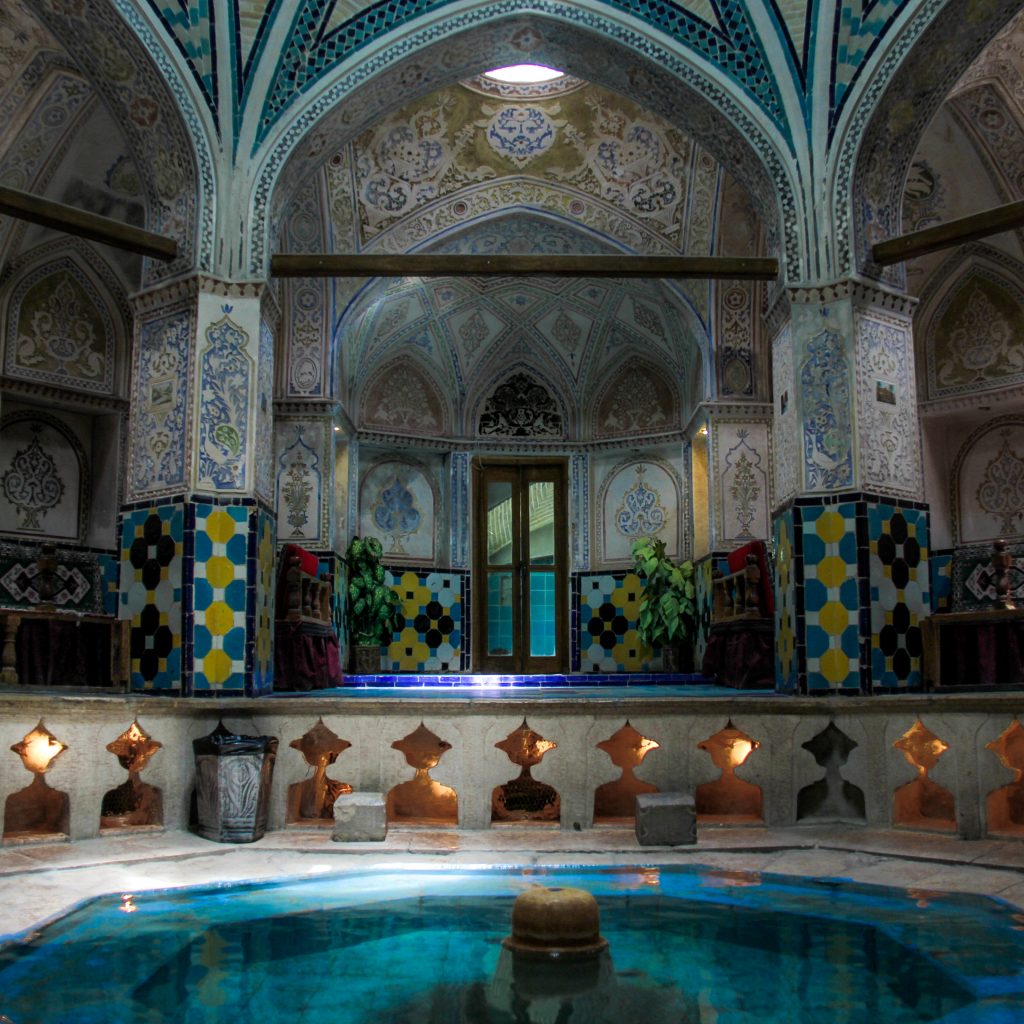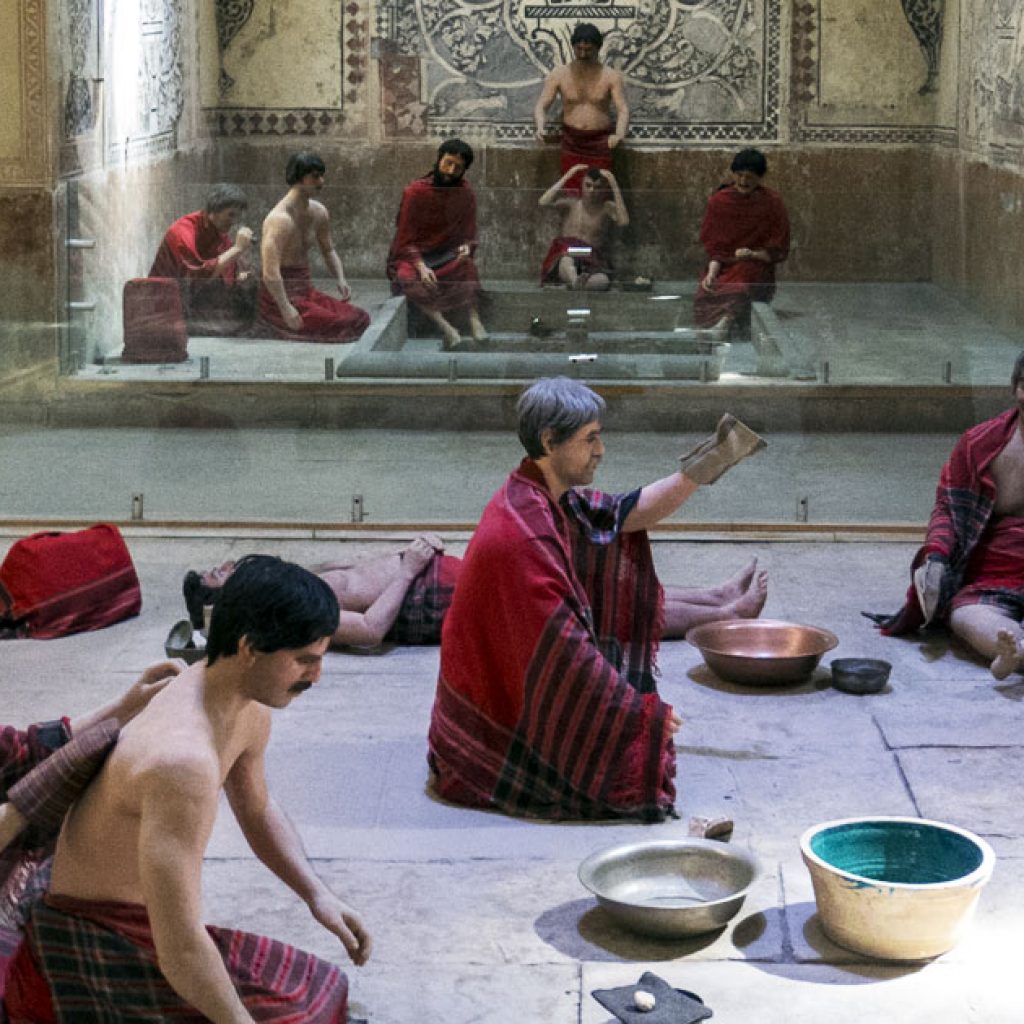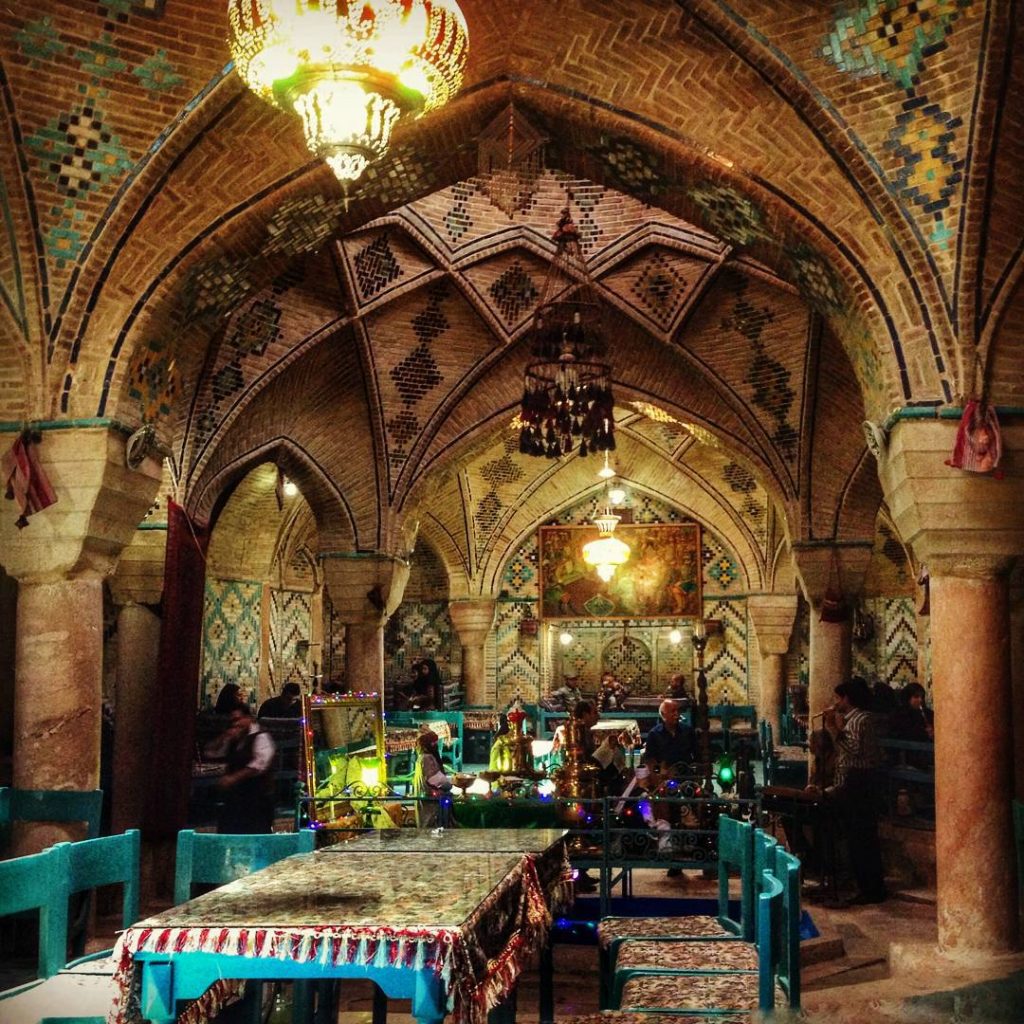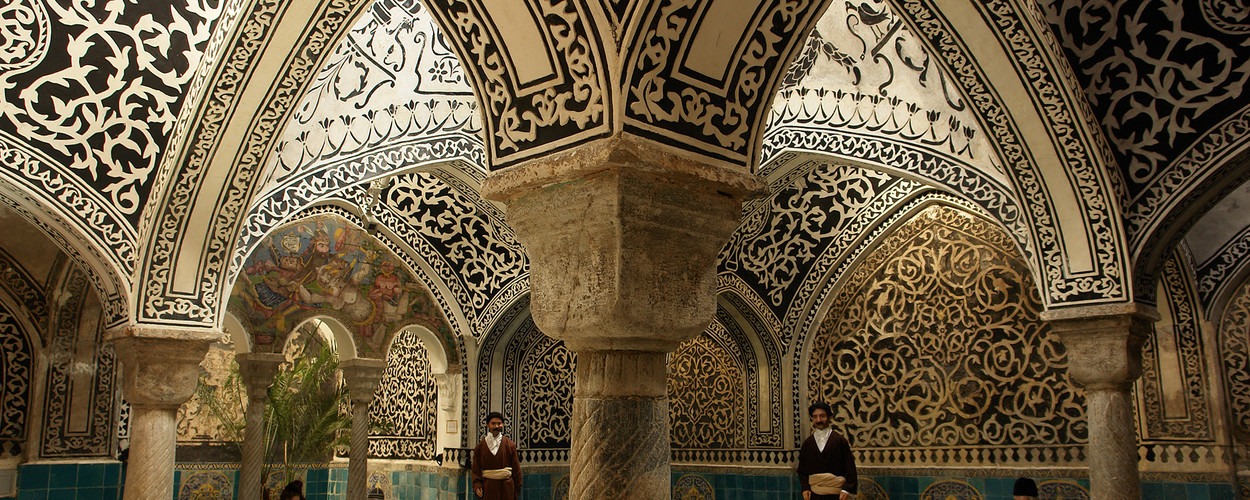Perhaps fewer know that the Iranians had a bath in their cities more than 3,000 years ago, and probably the first bath of history was built by Persia’s King in Persepolis. Persian Hammams are one of the most important components of Iranian architecture. Public bathrooms in Iran are not just a matter of health but a place for important people’s decisions at the time, forming cultural circles and enhancing local folklore. Let’s join us to see an introduction to the history of Persian Hammams and the most famous traditional old bathrooms in Iran.

Persian Baths have changed a lot through the years
There used to be a public bathroom everywhere in Iran, and locals went to the bathroom at least once a week for cleaning. The men were bathing until eight o’clock in the morning before sunrise, and women were bathing from that hour until noon and even several hours in the afternoon. There are still public bathrooms in most parts of Iran today. In public bathhouses that are less common in Iran today, traditions and customs have been adhered to in ancient times, and some have found the proverbial aspect. One of the rituals was that when everyone came into the bathroom, he would take a large bucket or bald of warm water from the bath treasury to express politeness and humility to the older people sitting in the bathroom, bagging and soap. He was shaking her head bigger. Of course, this was repeated by the large, respectable people sitting in the courtyard of the Persian bath and the newcomer knew it was his duty to pour hot water on each one of them. It could happen that one or more of those respected people were bagging or soaping and that there was no need to pour hot water on their heads and bodies, but these factors did not prevent them from paying their respects and as soon as they entered the courtyard of their bath, they were obliged to pour a hot water bald over their heads and bodies to make their bodies clean and polite. In Iran and in Mithraism, Mazdisna and Zoroastrianism as well as the religion of Islam have repeatedly endorsed the purity of body and soul. For this reason, Iranian baths throughout the territory of Iran had a special place. According to Moqad Ardeshir Khorshidian, president of the Iranian Mojahedin Association, Iranians are the first people in the world who build a bath for washing.
Stunning architecture of Persian Bath in Iran
Master of Iranian architecture built the old baths often lower than the ground level. There were two reasons for this, one is that the heat of the bath could not easily pass through the walls, and the second one is that it was easier to access subterranean water below the surface. A semi-dark dome-shaped space filled with steam plus a story in which the first baths were made by the elves for Solomon, Venus watered many and there were many who would not bathe in fear of goblins. An example of this is Muzaffar al-Din Shah, the fifth king of our own Qajar power, who, whenever he wished to bathe in water, sent Amir Bahador, his minister of war, to the Iranian bath to clear the goblins there. In the old days, it was less likely for someone to get cold due to going to the bathroom and getting air-cooled; it had a space near the outside of the Persian Hammas, making it difficult for you to avoid sudden changes in temperature when you left the bathroom.
Sarbineh was the venue to showcase the art of the Persian baths architect. They used the most beautiful and painstaking ornaments in Sarbanes. In fact, here was a luxurious wardrobe.
The construction of Persian Hammas as public buildings in Iran from the Ilkhanids or the Safavids
In the Ilkhanid era, especially after
the reform of Ghazan Khan, the era of building public utilities accelerated.
Many cities were built in cities like Maragheh, Tabriz, Ardabil, Soltanieh,
Kish and Takht-e-Soleiman. But the era of booming baths must certainly be seen
in the Safavid era. During the Safavid era, the heaters spread all over Iran in
one hand, due to the architectural and aesthetic beauty of the building’s
interior and exterior.
Isfahan has 3 mosques, 2 schools, 2 cavernosaurs and 2 baths, according to the Chardin logbook. Beautiful Persian Hammams in the Safavid period such as the baths of Golshan Lahijan, Khan and Ganjal Ali Khan Kerman, Ali Gholi Agha, Shah Isfahan Bath and Rahnan Bath have shown the taste of Iranian architects at that time.
After the Safavids, Persian baths continued in the style of Isfahan architecture, and the lawyer baths of Shiraz (Zandiyeh), the Four Seasons Bath (Arak) and Hazrat I Zaneh (Semnan) and Mesbah Karaj (belonging to the Qajar period) continued.

Thermal architecture and different spaces of Persian Hammams
The main physical-space parts of the Iranian baths, called binhas, are the door and the warm house. According to traditional Iranian-Islamic medicine, the design of the various sections was known as the cold, temperate and warm.
The Iranian baths are built on four main themes in ancient medicine: warm, cold, dry and full. In the past and in traditional medicine that is still prevalent today, human health was considered to be the balance between these herbs.
Each space was separated by aisle and eight other spaces to greatly reduce the temperature and humidity of each space relative to the adjacent space and the abrupt exit to the cold space.
The first house was called the Cold House, the cloakroom or bin, which was cold and dry, and was designed to be the equivalent of a fall season in which the hydrogen sputum is created in the human body. In the fridge or bin, generally made of octagonal and domed ceilings, there were platforms in which mattresses or carpets were spread and people were brought out in space. Stone or tile was generally used to decorate this space and was placed on the ceiling of glass domes called the cup. By removing the cups (generally spherical pottery) the temperature was adjusted according to the seasons and the disinfection environment adjusted.
Midway door was the second house or “middle door” that was more cold and temperate, equivalent to the winter season in which sputum was found in humans. Binet’s connection to the warm house was via the “door”. The space was atrioventricular and maze-shaped, sometimes using a small vestibule. This allows the person to step into the bin from the warmth of the house and also the heat and heat accumulated in the house warm to not be released at once and not waste energy.
The Green Houses are The third or warmer house that is equivalent to the spring season when the sputum is formed in the human body. This was the place to remove pus and wash. It was usually made of octagonal or quadrangular, with thick walls that bit the floor and covered it with mortar. The warm roof of the house was taller than the rest of the buildings, with the main vault having a lamp and lighting system. But why candles or oil lamps were not used to illuminate the interior can be attributed to their potential respiratory problems. For this reason, cups were used as lenses to illuminate the buildings.

Treasury houses are places that there was hot water and cold water in the warm house of the treasury. On the floor of the treasury was a sheet of metal about 1 to 2 cm in diameter, which was the distance between the water and the fire.

The most famous Persian Hammas and old Iranian baths in Iran are:
• Fin Kashan Bath
• Hebei Haj Mohammad Rahim (Safa) Qazvin
• Kerman Lawyer Bath
• Sheikh Bahai Isfahan Bath
• Ganjali Khan Kerman Bath
• Zahir al-Islam Ardebil Historical Bath
Arak Four Seasons Bath
• Shiraz Lawyer Bath
• Sultan Amir Ahmad’s bath




Comment (0)